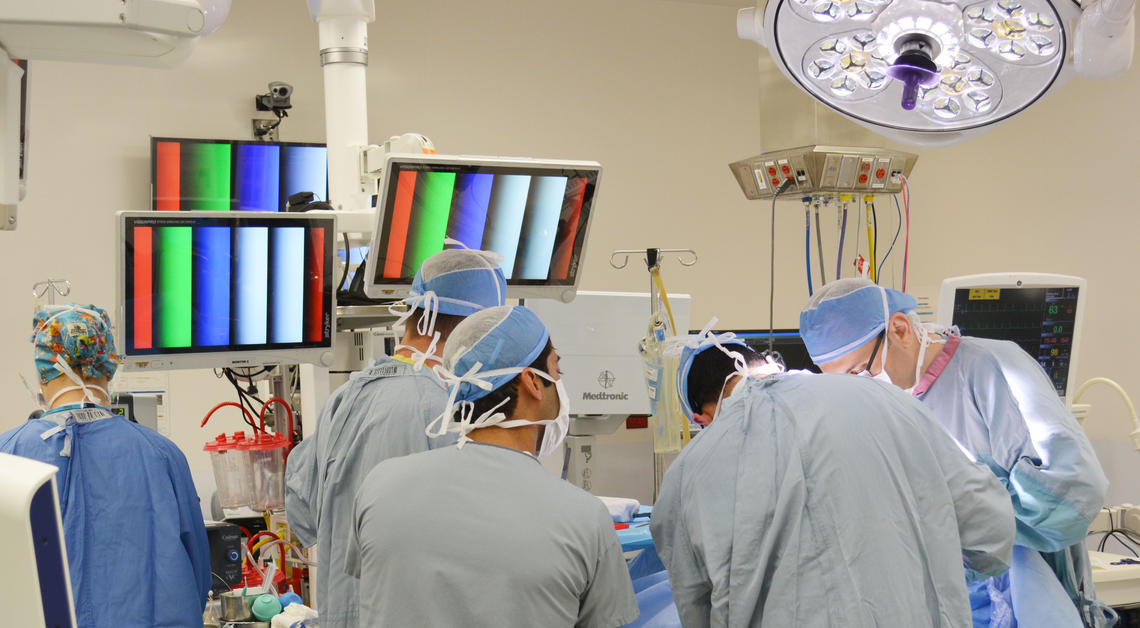Content & Organization of the Fellowship
Aspects of Training
The fellow will spend approximately equal time devoted to clinical and academic activity (as above).
Content of Training
A. Clinical Activity:
Hours OR: 12 hours/week (average)
Clinic/Office: 6 hours/week
B. On Call Duty
Frequency/Week: Home call schedule will be generated based on the call roster of the preceptor and the fellow will be on call whenever the preceptor is on call. This averages about 8 weeks/ year, with some weeks having 5 days on call and others 2 days on call in the week.
Call overlap with residents, medical students, etc.: To accompany preceptors during on-call cases, whenever the preceptor is on call.
C. Scheduled activities:
Approximate weekly schedule:
- Monday and Tuesday AM: Research/scholarly day
- Tuesday afternoon: Neurosurgery outpatient clinics.
- Wednesday: OR (Week 1 and 2 of each month -Dr. Midha’s clinical weeks).
- Wednesday: 0700 spine rounds. Research day. Lab journal club and meeting throughout day.
- Thursday: OR (Week 2 of each month). 0730 Neuromuscular rounds once/month. Combined PN clinic 3rd Thursday each month at SHC (full day).
- Friday: 0700 Neurosurgery Rounds; 0800 Clinical Neuroscience case presentations; 0900 Grand Rounds Dept of Clinical Neuroscience visiting lecturer. OR (Weeks 1 and 2 of each month). 1200-1300 Hotchkiss Brain Institute (http://www.hbi.ucalgary.ca/) Seminar.
Clinical Resources Available for Fellowship
Patients with nerve, spinal cord and brachial plexus injuries from Calgary, surrounding areas in Alberta and parts across Canada are being screened at our South Hospital Campus multidisciplinary clinic, with many of these coming to surgery. Operative clinical volumes average four major cases a month and half a dozen to a dozen minor cases a month, including injuries, entrapments and tumors. The Fellow can therefore expect to participate in a large volume of clinical cases in the clinic and operating room, with an emphasis on peripheral nerve surgery but also some general neurosurgery. We have a very solid collaborative program with our neurology and plastic hand surgery colleagues. The Fellow has the opportunity to attend the various clinics, and to gain experience with the interpretation of electrodiagnostic studies. We also collaborate with our plastic surgery and reconstructive team who have on average 2 faculty members attend our monthly multidisciplinary nerve clinic.

Educational Activities
Educational activities such as monthly Neuromuscular Rounds, bimonthly Nerve Regeneration Rounds and Journal Club, and weekly Neuroscience Departmental Grand Rounds further enhance the experience. There is the opportunity to participate as an instructor in a cadaveric dissection course on nerve surgery, anatomy and approaches that is held yearly in January every year and run by us.
Research Activities
Projects in clinical and basic research in peripheral nerve are available. While not an exhaustive list, the following give an idea of the areas of research being explored:
- Nerve transfers to restore motor hand function in tetraplegic spinal cord injury patients
- Repair of nerve injuries with guidance tubes and skin derived Schwann cells
- Intraoperative electrophysiologic assessment of fascicular nerve transfers
- Electrical stimulation to enhance regeneration and recovery from nerve repair
- Evaluation of nerve transfer using supercharged techniques
- Assessment of therapeutics in a pre-clinical experimental model of nerve injury in continuity
- Delivery of therapeutics and cells for nerve augmentation using experimental MRgFUS
- Characterization of rodent and human peripheral nerve injury using genomic based approaches

